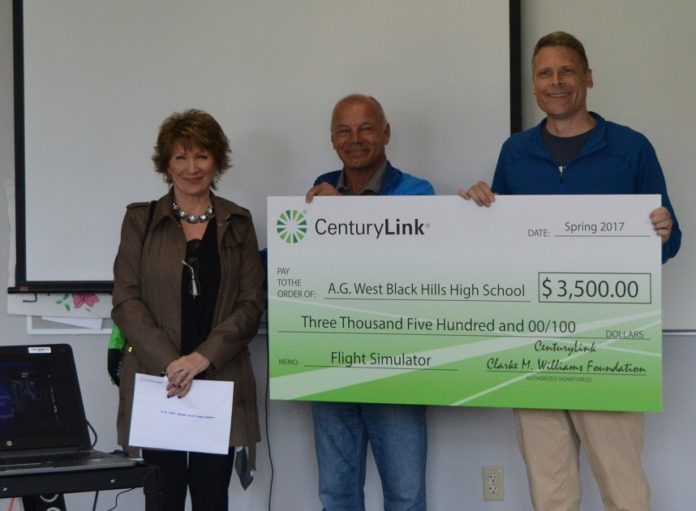
Scott Cutler, who teaches a very unique aeronautical engineering class at Black Hill High School, was recently awarded a $3500 Clarke M. Williams Foundation Teachers and Technology Grant from CenturyLink so ] he can purchase a dedicated flight simulator for his students to use in class. While Cutler applied for the grant himself, the fact that he won was a surprise, announced on April 27.
 “Mr. Cutler’s focus on aviation – indeed engaging all the STEM areas – was a perfect match for a Teachers and Technology grant,” says Sue Anderson, VP of Network Operations at CenturyLink. “As Mr. Cutler stated in his application, ‘our school computers lack the capabilities to allow the flight simulator to run at its full potential. This grant will be used to purchase a dedicated flight simulator.’ In a state where many students can aspire to work in the aviation industry, with an industry leader having a big presence in our state, it makes it all the more appealing for CenturyLink to want to be involved providing students the tools for success.”
“Mr. Cutler’s focus on aviation – indeed engaging all the STEM areas – was a perfect match for a Teachers and Technology grant,” says Sue Anderson, VP of Network Operations at CenturyLink. “As Mr. Cutler stated in his application, ‘our school computers lack the capabilities to allow the flight simulator to run at its full potential. This grant will be used to purchase a dedicated flight simulator.’ In a state where many students can aspire to work in the aviation industry, with an industry leader having a big presence in our state, it makes it all the more appealing for CenturyLink to want to be involved providing students the tools for success.”
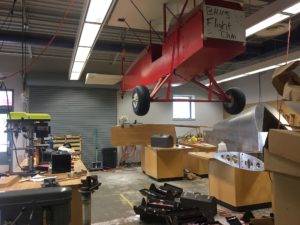
Clearly not your average high school teacher, Cutler has a private and commercial pilot license as well as an advanced ground instructor license and is a certified flight instructor. He taught his aeronautical engineering class at Bush Middle School for six years but eventually outgrew the space. So, he moved to Black Hill High School and now enjoys a large classroom with an adjoining shop. During the first year, he had twelve students. This year he has forty-eight in two different classes.
There is just one girl in his classes this year, however, which is something Cutler is focusing on changing. “That’s my next goal,” he says. “How do we get the girls in?” He is enlisting the input of this year’s lone female student, asking for help on how to market the class to others girls in the school.
Cutler also has a flight club that meets once a month after school. In the club there are many more female students, so he is hoping some of them will want to join a class next year as a logical next step. The club works on plane projects, goes flying and attends science fairs.
A Unique Class
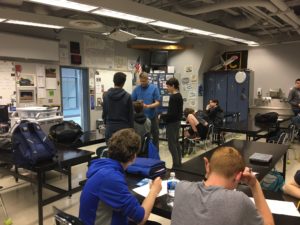
When I went to see Cutler in action, I walked into a bustling classroom. Students from all four grades, nine through twelve, were working in groups on different projects. Cutler was not standing at the front of the class but moving from group to group, helping as needed. All the students had smiles on their faces – it was clear they enjoyed what they were doing.
“We love building stuff,” several of the students share, while grouped around an impressive sheet of numbers and equations, “but the math isn’t fun,” they say with a wry smile. However, Cutler is teaching these kids why they need math, not just the skills, and which of the many professions they can go into require it. This helps kids understand why they have to learn things that seem so abstract – such as trigonometry or calculus.
“Sure, some may become pilots, but there are so many jobs within the field of aeronautics – I try to teach them about as many of those as I can,” Cutler says. “My goal is to get them into a STEM field. Piloting is just one field. They also learn wiring on instrument panels so they could go into an electrical field. We are building aircraft, so they could go into mechanics, assembly or maintenance. Or maybe a career as a dispatcher which we discussed while learning flight plans. I am always trying to make sure they see the job connection.”
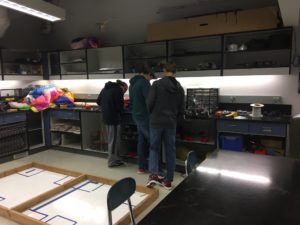
For Cutler that includes showing them that not all of these jobs require a four-year degree. Some require a two-year degree, and others just on-the-job training or a certificate. “And, I point out that most of the time they are going to make more money than I am,” he laughs.
The flight simulator will allow students to see their planned flights with very realistic settings. It will have a dedicated big screen monitor, which allows the kids to test out the flights they have mapped. Yes, these high school students are learning how to map a plane’s course accurately and with real instruments.
“They learn how to use an E6P, which is an aviation circular slide rule,” he explains. “They also learn how to read aviation sectionals and plotters. Then, they learn how to do all their time/distance/speed calculations and how the wind will affect it. Basically, they are doing trig and algebra.”
This is what students learn in flight school. And, apparently, at Black Hills High School.
Cutler’s entire program is built on grants. “Schools can’t afford a program like this,” he explains. So over the last eight years he has brought in over $76,000 to fund it for his students. He also gladly accepts donations of materials from the community, especially things like solder, wood, aluminum and wire.
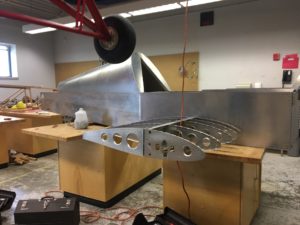
Next year, thanks to another grant he received, the aeronautical engineering class at BHHS will be a two-year program where students will earn a science credit, a CT – vocational education – credit, and a certificate of completion that Boeing will accept as preliminary training.
This year marks the eleventh year Century Link has given out this particular grant. Over $1 million has been given to classrooms through this program alone. In 2017, twenty-two applications were selected and a total of $99,971 was gifted.
“STEM competencies help prepare students to be critical thinkers, persevere through challenges to achieve success, communicate and collaborate across real and perceived barriers, and solve complex problems,” says Sue Anderson, VP of Network Operations at CenturyLink. “A highly trained workforce is a key factor to our success as a company and as a nation. The Teachers and Technology program supports the company’s key objective to improve its customers’ lives by connecting them to the power of the digital world.”
For more information, visit the CenturyLink website.



















































